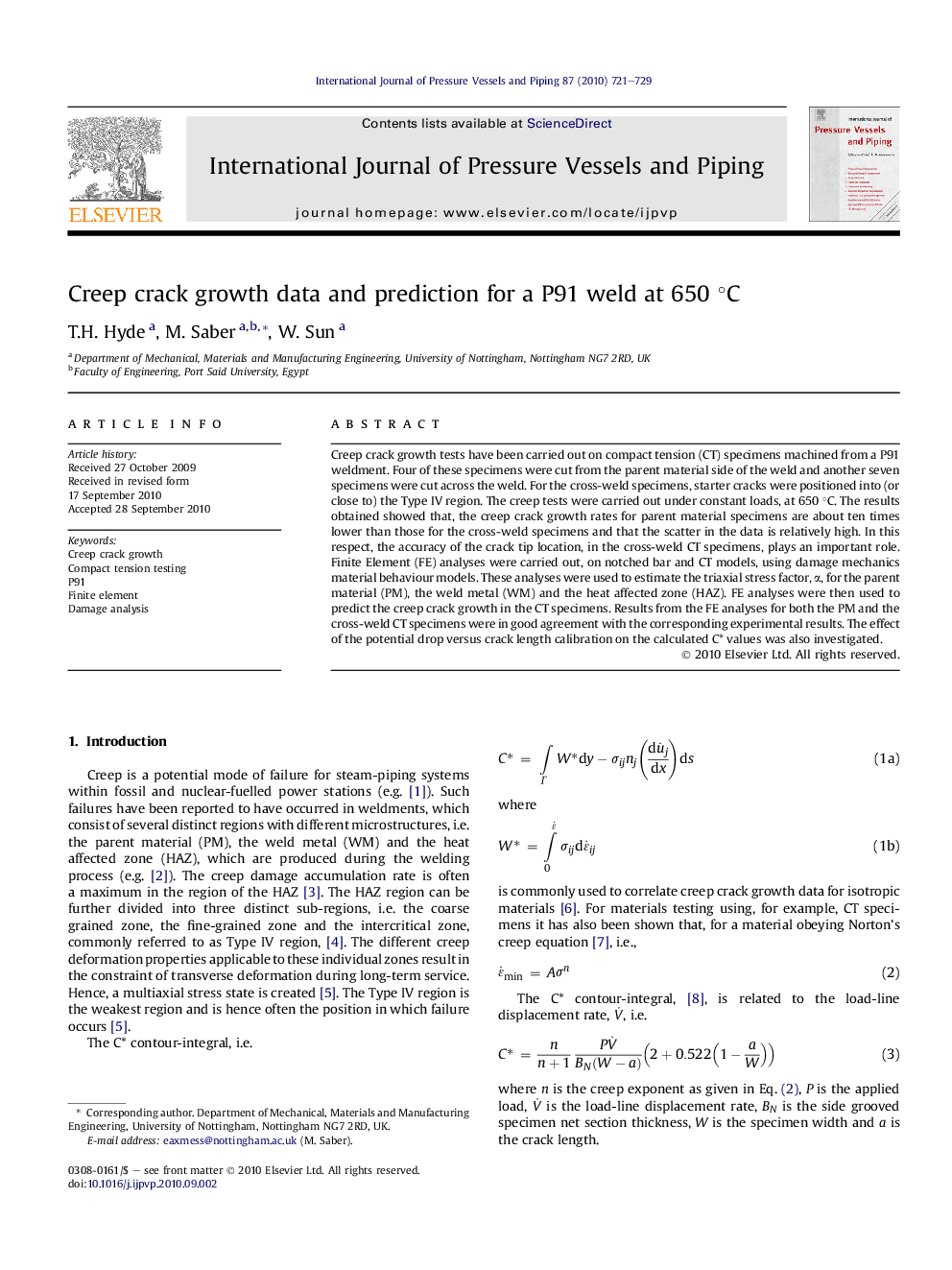| Article ID | Journal | Published Year | Pages | File Type |
|---|---|---|---|---|
| 785478 | International Journal of Pressure Vessels and Piping | 2010 | 9 Pages |
Creep crack growth tests have been carried out on compact tension (CT) specimens machined from a P91 weldment. Four of these specimens were cut from the parent material side of the weld and another seven specimens were cut across the weld. For the cross-weld specimens, starter cracks were positioned into (or close to) the Type IV region. The creep tests were carried out under constant loads, at 650 °C. The results obtained showed that, the creep crack growth rates for parent material specimens are about ten times lower than those for the cross-weld specimens and that the scatter in the data is relatively high. In this respect, the accuracy of the crack tip location, in the cross-weld CT specimens, plays an important role. Finite Element (FE) analyses were carried out, on notched bar and CT models, using damage mechanics material behaviour models. These analyses were used to estimate the triaxial stress factor, α, for the parent material (PM), the weld metal (WM) and the heat affected zone (HAZ). FE analyses were then used to predict the creep crack growth in the CT specimens. Results from the FE analyses for both the PM and the cross-weld CT specimens were in good agreement with the corresponding experimental results. The effect of the potential drop versus crack length calibration on the calculated C* values was also investigated.
